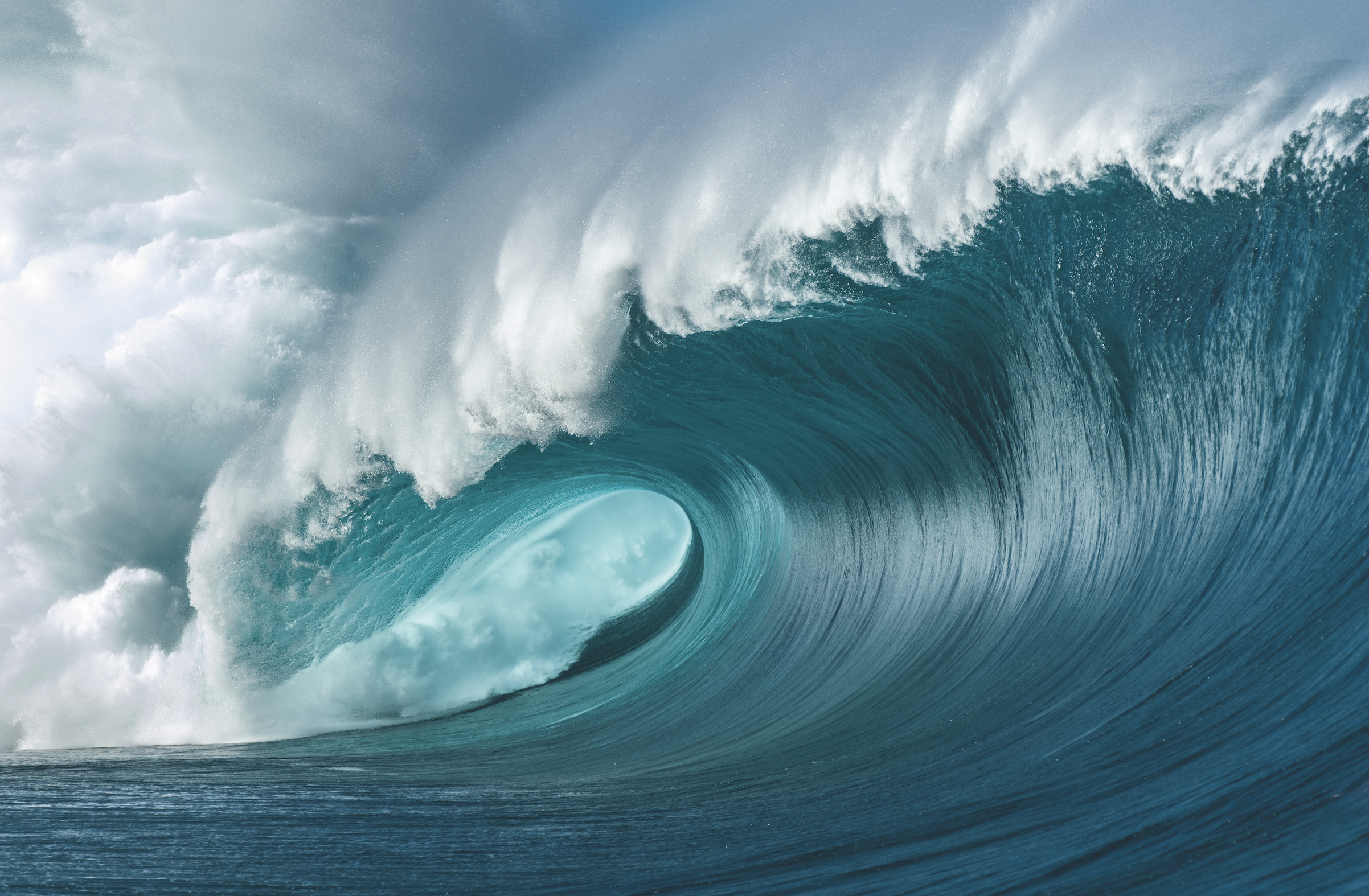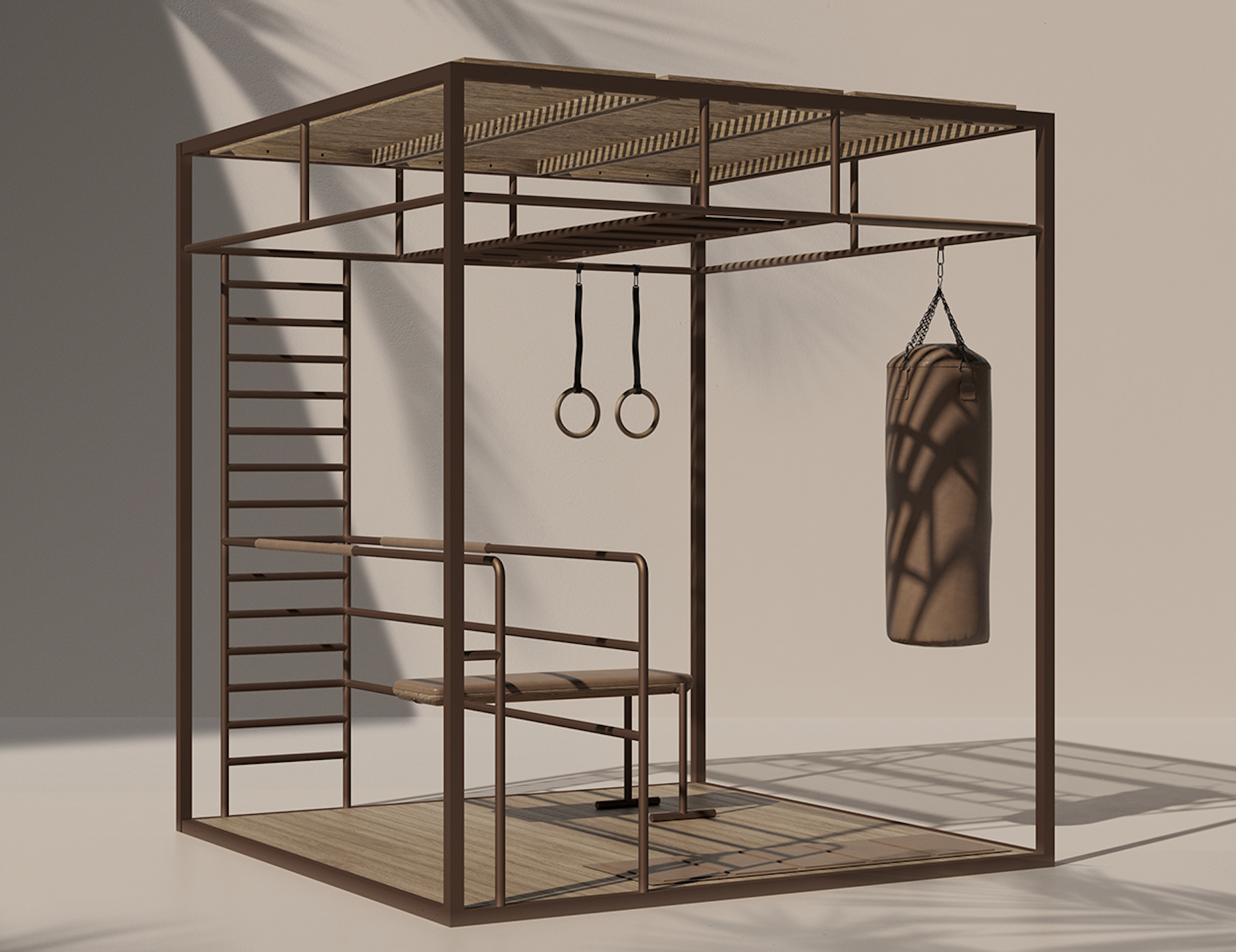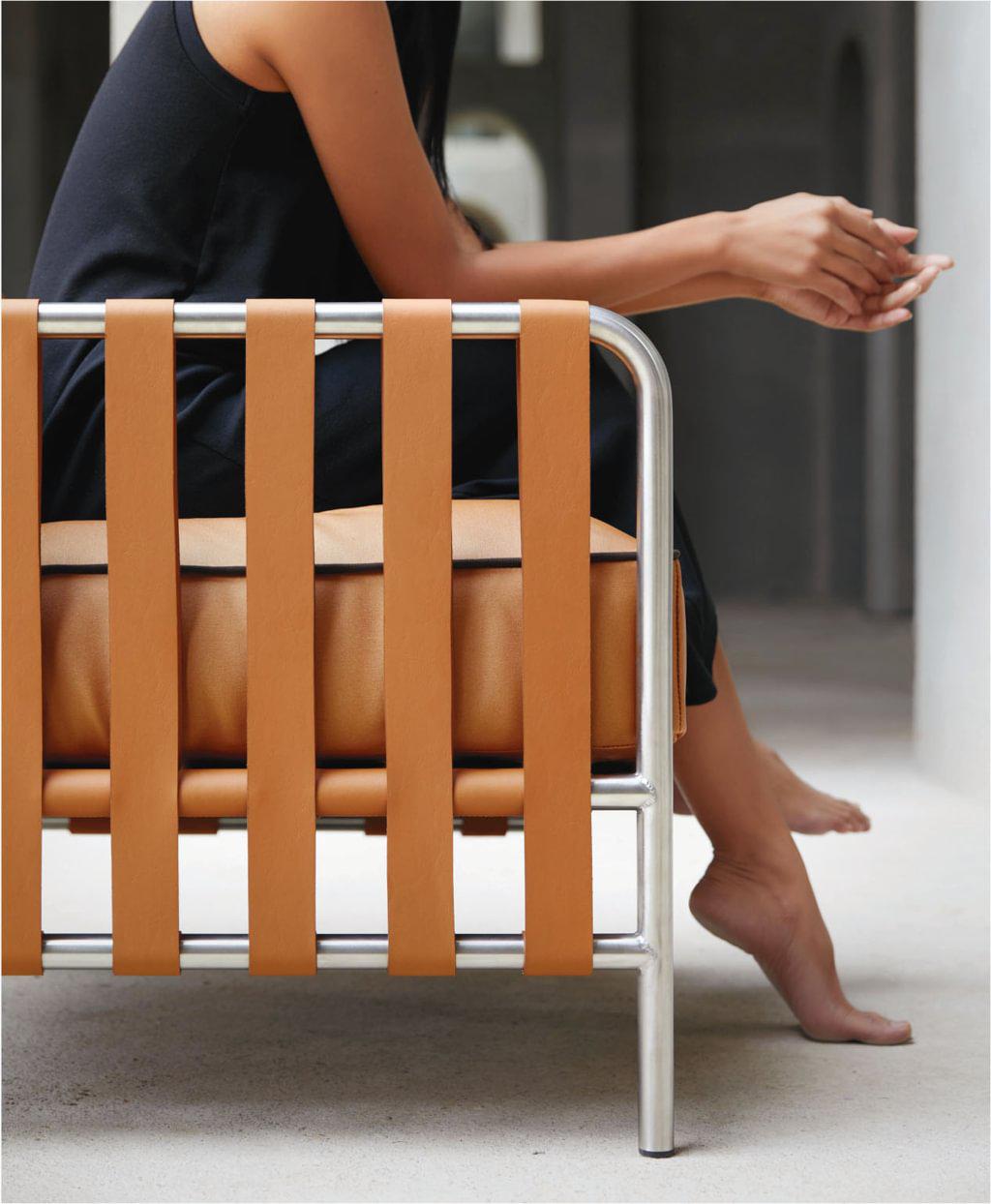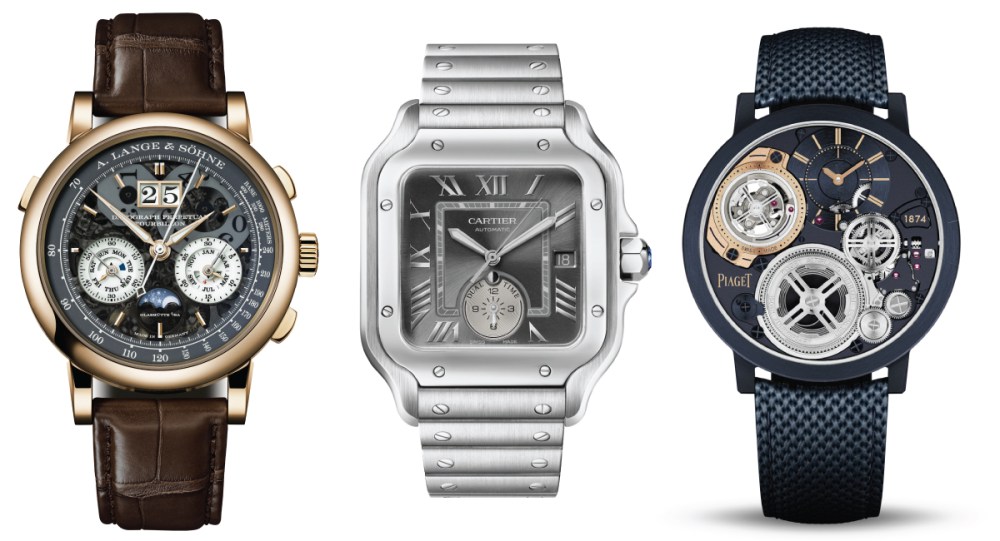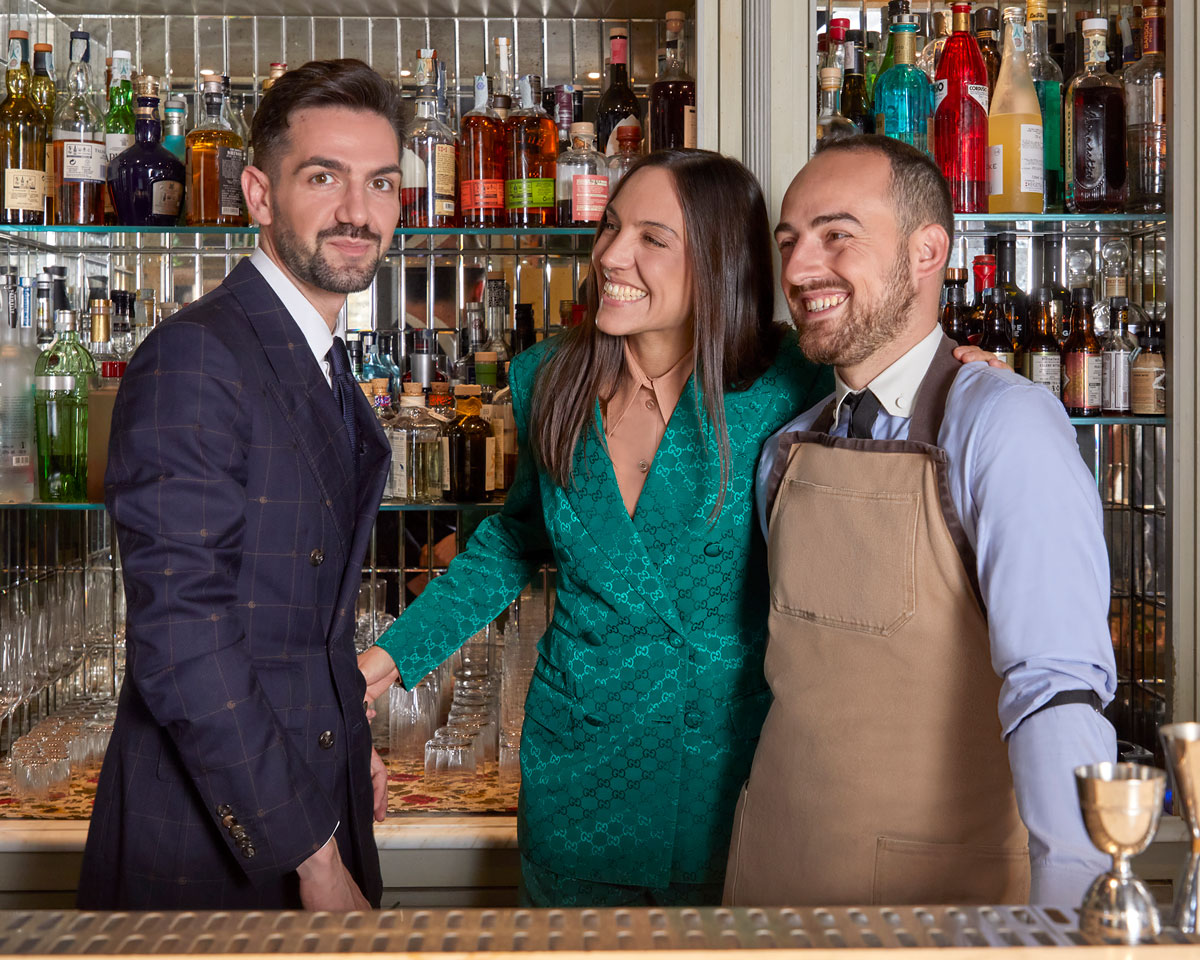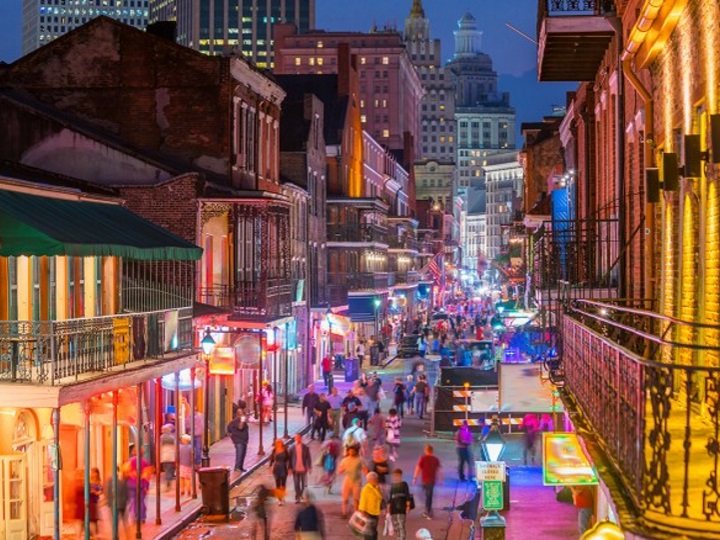
How to do New Orleans Mardi Gras in style
You won’t find us wandering the French Quarter amid the parade crowds. Instead, we’ll be living it up with some of the Big Easy’s best.
Related articles
Cheers of "_Laissez les bons temps rouler!"_ will soon fill the streets of New Orleans, as the lively Louisiana city prepares for its biggest celebration. Mardi Gras falls on February 28 this year, and the festivities — which canvas NOLA in colourful beads and elaborate costumes of purple, green, and gold — are about to begin.
But you won't find us wandering the French Quarter amid the parade crowds. Instead, we'll be living it up with some of the Big Easy's best. From the devilishly delightful suites at the Saint Hotel to the best Sazerac in town, we've got the inside scoop on the most luxurious way to do New Orleans for Mardi Gras — or any time of year. Beads not included.

Best Place to Get a Room: The Saint Hotel
The Saint Hotel in New Orleans's French Quarter promises a restful night of sleep for sinners and saints alike with its five luxury suites, each named for an angel or saint.
Most appropriate for a Mardi Gras stay is the 186-square-metres Archangel Lucifer Suite, $US2500 (about $A3240) per night, a devilish dwelling adorned with a red-and-black colour scheme — including a black Murano chandelier and black claw-foot bathtub — and antique Victorian furnishings.

Guests feeling a bit wicked can take to the suite's small private stage, which is spotlighted by a sparkling mirrored light fixture and outfitted with a dance pole. Should the debauchery just outside in the French Quarter overwhelm, other accommodations like the Archangel Michael Suite offer more saintly interiors with sky-blue ceilings and white furniture. (thesainthotelneworleans.com) – Carolyn Meers

Best Luxury Escape: The Ritz-Carlton, New Orleans
Housed in a historic 1908 Beaux-Arts building, the Ritz-Carlton New Orleans, from $US600 (about $A775) per night, is a sumptuous place to recuperate after a wild night on Bourbon Street.
The hotel's Lundi Gras Ride of a Lifetime package $US25,000 (about $A32,400) includes a four-night stay in the Club Level Maison Orleans Suite (which overlooks the French Quarter and the Mississippi River), limousine service to and from the airport, daily breakfast in bed, and the chance to ride on a float in Harry Connick Jr.'s Krewe of Orpheus parade on Lundi Gras.

Back at the hotel, guests can moonlight as a New Orleans native by trying an indigenous voodoo ritual at the spa or taking private trumpet lessons from Grammy Award–winning jazz musician Jeremy Davenport. (ritzcarlton.com) – Rebekah Bell

Best Hangover Cure: Brunch at Balise
Recover from a wild night of partying with a hearty brunch at chef Justin Devillier's Balise. Devillier's bold version of New Orleans cooking impressed judges at _ Robb Report _ 's 2016 Culinary Masters Competition— as well as members of the James Beard Foundation and critics at numerous national magazines — and they will recognise his decadent style in hangover-busting dishes such as the blue crab omelette, pickled quail eggs with hot sauce, and French toast topped with caramel apples and spiced butter.

Hair of the dog, meanwhile, comes via Balise's extensive craft cocktail list, featuring the refreshing Methuen Treaty, composed of gin, ruby port, Williams pear liqueur, ginger, and citrus. (balisenola.com) – Michalene Busico

Best Over-the-Top Mardi Gras Package: Clandestine
The Big Easy has much more to offer than just beignets and Bourbon Street bars. New Orleans transplant Kelley Troia, who runs the local concierge company Clandestine, offers bespoke cultural packages to show clients a different side of the historic city.

The Clandestine Ultimate Mardi Gras Experience, $US10,000 (about $A12,960) per person) is her most over-the-top, including VIP parade access, a table at one of the exclusive Mardi Gras balls, and a personal brass-band parade.
Along the way, travellers will have the knowledge of a local at their fingertips, bringing NOLA's history and mystery to life at every turn. (clandestinenola.com) – Rebekah Bell

Best Upscale Southern Cuisine: La Petite Grocery
Talk of New Orleans cuisine always seems to lead to La Petite Grocery. Helmed by chef Justin Devillier—a California native with a penchant for seafood and French cuisine — the Garden District restaurant showcases Southern staples with dishes like blue crab beignets and gulf shrimp and grits.

La Petite's claim to fame, however, is its Turtle Bolognese, a rare twist on traditional beef Bolognese that adds bucatini, sherry, parsley, and fried soft-boiled egg to turtle meat. For a taste of Devillier's California roots, order the roasted yellowfin tuna, served with fennel, citrus, beets, and yogurt. (lapetitegrocery.com) – Erin Lentz

Best Booze-to-Go: Willa Jean
A staple for NOLA foodies, Willa Jean specialises in Southern favourites like biscuits and shrimp and grits. But few items on the menu have generated as much buzz as the Frosé Y'all, a frozen rosé upgrade to the traditional Hurricane that can be ordered to go.

Mardi Gras–goers who wish to stay a while can also indulge in Willa Jean's other famous offering: king cake, a sweet brioche composed of folded layers of caramelised chocolate and espresso layers and topped with chocolate shavings. (willajean.com) – Rebekah Bell

Best Spot for a Sazerac: The Polo Club Lounge at Windsor Court Hotel
A spirited night of partying in NOLA is not complete without a Sazerac in hand. Traditionally made with rye whiskey, bitters, simple syrup, Herbsaint, and lemon peel, the slightly sweet cocktail is a Crescent City twist on traditional Cognac or whiskey libations.
The Polo Club Lounge at Windsor Court Hotel offers one of the best versions in the entire city. Head bartender Roger Blais has served more than 50,000 of the cocktails in the last 20 years, a testament to their enduring popularity.
Sip a round or two while taking in one of the swanky bar's nightly jazz shows, including beloved local acts like the ragtime ensemble Meschiya Lake and the Little Big Horns and pianist John Royen. (windsorcourthotel.com) – Rebekah Bell

Best Haunt for a Thrill: LaLaurie Mansion
Located at 1140 Royal Street, the LaLaurie Mansion in New Orleans is the centrepiece of a grisly tale that began in 1832 when Dr. Louis LaLaurie and his wife Delphine moved into the house in the city's affluent French Quarter.
Two years later, a suspicious fire at the mansion (said to be set by a kitchen worker) led to authorities uncovering Delphine's chamber of horrors hidden in the attic where she would sadistically torture her slaves. A mob gathered around the mansion, demanding justice for her victims, but Delphine was nowhere to be found.
Local legend says that the screams of her servants still haunt the mansion — and although actor Nicolas Cage bought the house in 2007, he sold it soon afterward in 2009. The house was also featured in the third season of the hit television series _American Horror Story_. Guided tours are available for Mardi Gras visitors eager for a closer encounter. (viator.com) – Bekah Berge
Subscribe to the Newsletter
Recommended for you
Don’t Ride This Wave ….*unless your name is Robinson, Slater or Moore.
The 2024 Olympic surfing comp will be held at Tahiti’s treacherous Teahupo’o. Going for gold could be deadly.
By Jen Murphy
April 15, 2024
Into the Deep
Above and below water, Scenic’s Antarctic adventure is visceral and unreal in equal measure.
March 26, 2024
You may also like.
By Jay Cheses
17/04/2024
You may also like.
Forever Leather
Furnishings wrapped or accented with classic, cognac-coloured hide create a patina that works with any aesthetic.
Onsen, Gandia Blasco
As the textile industry makes technological advances, traditional outdoor furniture made from iron, wicker and teak seems ever so throwback-y and, dare we say, inconvenient and even uncomfortable. Gandia Blasco’s Mediterranean roots and architectural approach shine in its Onsen collection of garden furniture. Luxe synthetic-leather straps wrapping a tubular stainless-steel structure paired with long-wearing cushions in a similar shade lend new life to the idea of living with leather outdoors. From about $4,425; soft mat about $620, warm mat about $810; Onsen, Gandia Blasco
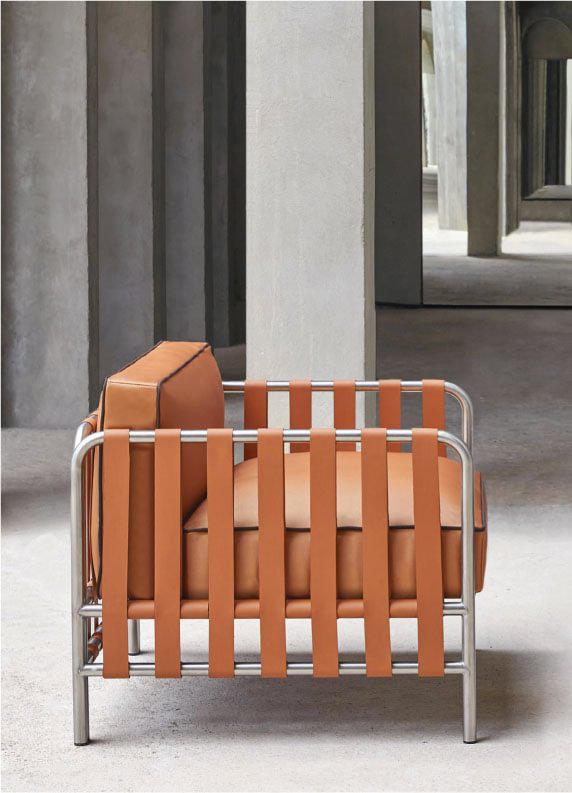
Gabri, Bolzan
The pared-down, leggy look of these tripod tables packs a functional punch without foregoing refinement. Designed by Matteo Zorzenoni for Bolzan and made in Italy, the Gabri’s leather-bound frames with subtle topstitching and semicircular notches recall desktop accessories of an analog age. The dark tops with touches of chalky veining are thoroughly of this century: made from neolith stone, they’re temperature-resistant and waterproof, so go ahead and place your martini where you will. Small, about $1,735; large, about $2,603; Bolzan.com
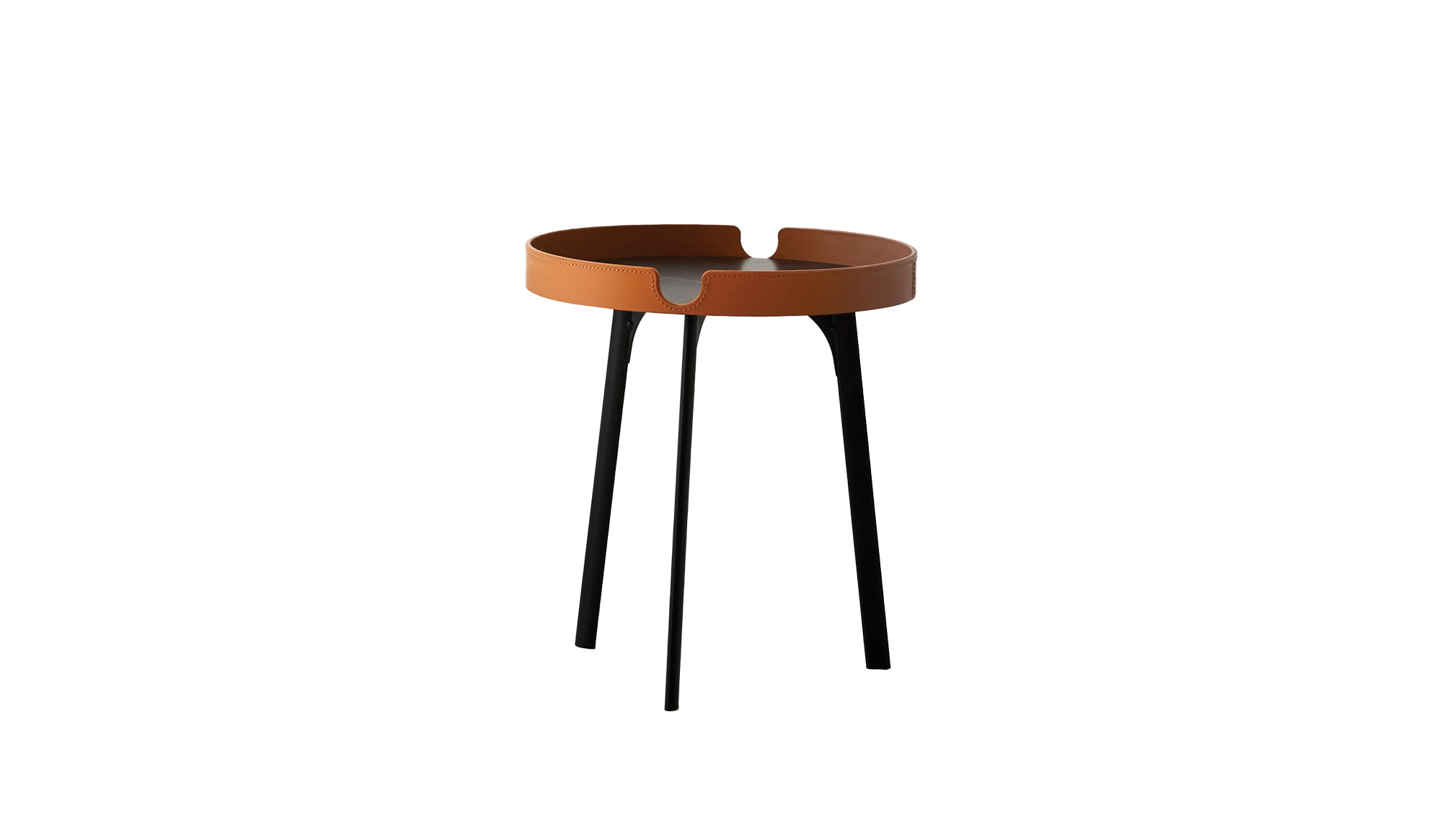
Zenius Lines Giobagnara
Giobagnara’s leather-encased Nespresso machine with vertical- or diamond-quilted detailing is genius in its unfussy application. The leather suits the product; the design channels the look of a luxury Italian sports car. The brand began with the Bagnara family producing household items in 1939, before moving into the luxury realm in the ’70s. Giorgio Bagnara changed its name to B. Home Interiors in 1999 and to the eponymous Giobagnara in 2014. If you like your home appliances with liberal leather detailing, it’s one to follow. About $7,900; Artemest.com

Vague, Tonucci Collection
Fun house–meets-Baroque in this softly symmetrical, wall-mounted mirror that playfully beckons you into another dimension (and will bounce beautiful light around the room). Designed by Viola Tonucci, who took the reins of Tonucci Collection from her father last year, the thick, leather-covered frame introduces architectural interest and a hint of levity to a room, be it traditional or modern. About $8,050; Tonucci.com
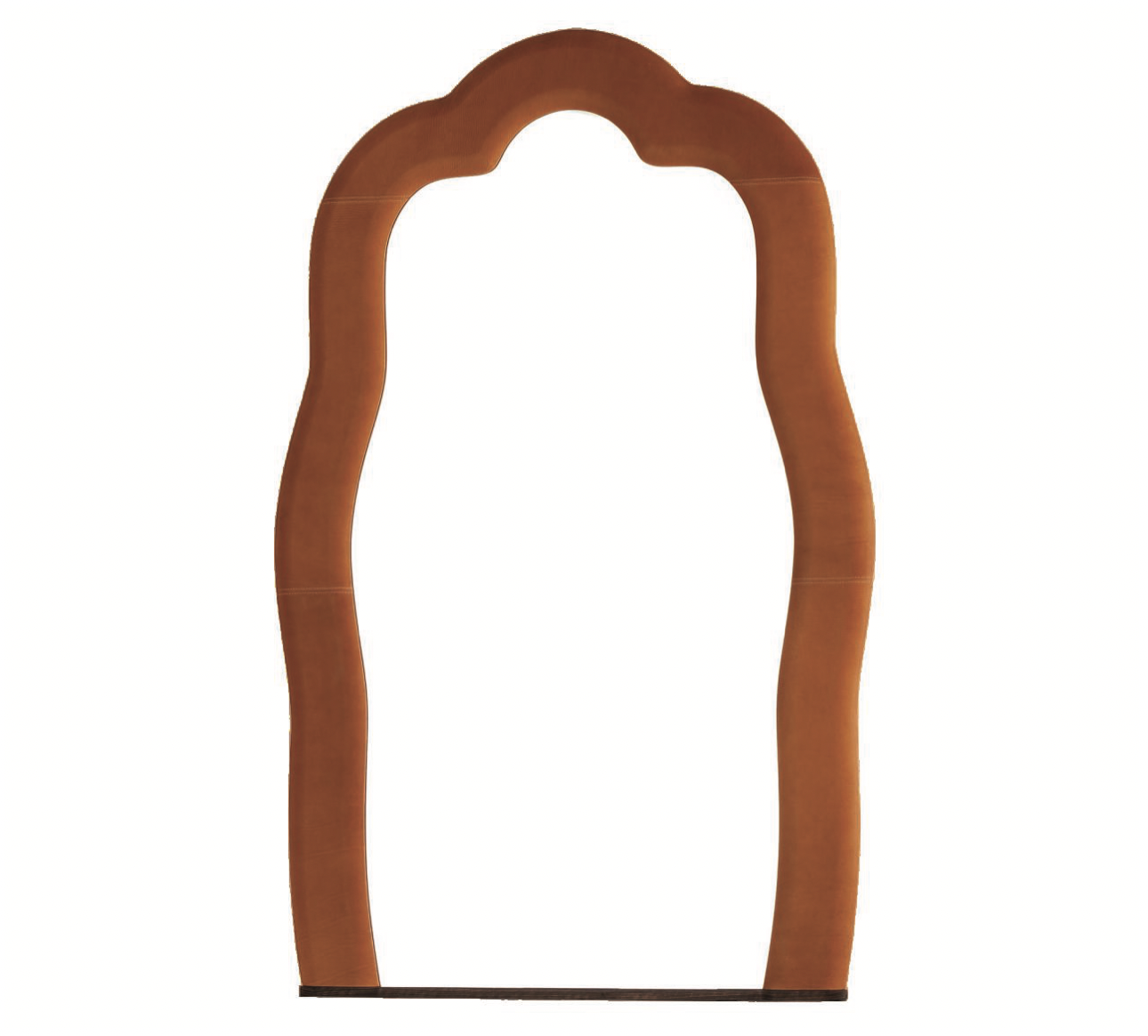
DS-707, de Sede
Given Philippe Malouin’s propensity for experimentation, it’s no wonder that Swiss furniture firm de Sede took a whole new approach in manufacturing Malouin’s DS-707 design. He began by noodling around with foam, folding it this way and that before settling on the serpentine shape. Although the silhouette made de Sede wary—creating it required the team to manipulate leather in a manner that could leave it less supple— the project prevailed with great success. The system itself invites experimentation as customers can configure the components to their heart’s content. From $30,450; deSede.com

You may also like.
By Jay Cheses
17/04/2024
The Perfect Fit
From garden to park, feel the burn with Ethimo’s slick access-all-areas gym.
Not feeling your Peloton?
Hit the gym outside with garden furniture brand Ethimo and Studio Adolini’s open-air “fitness room”, OUT-FIT. Measuring 250 x 250 cm and 280 cm in height, but designed to be adaptable to any open-air location, OUT-FIT is made entirely in teak and rust-finish metal, and comes with a series of equipment for bodyweight training.
Let’s do this. ethimo.com
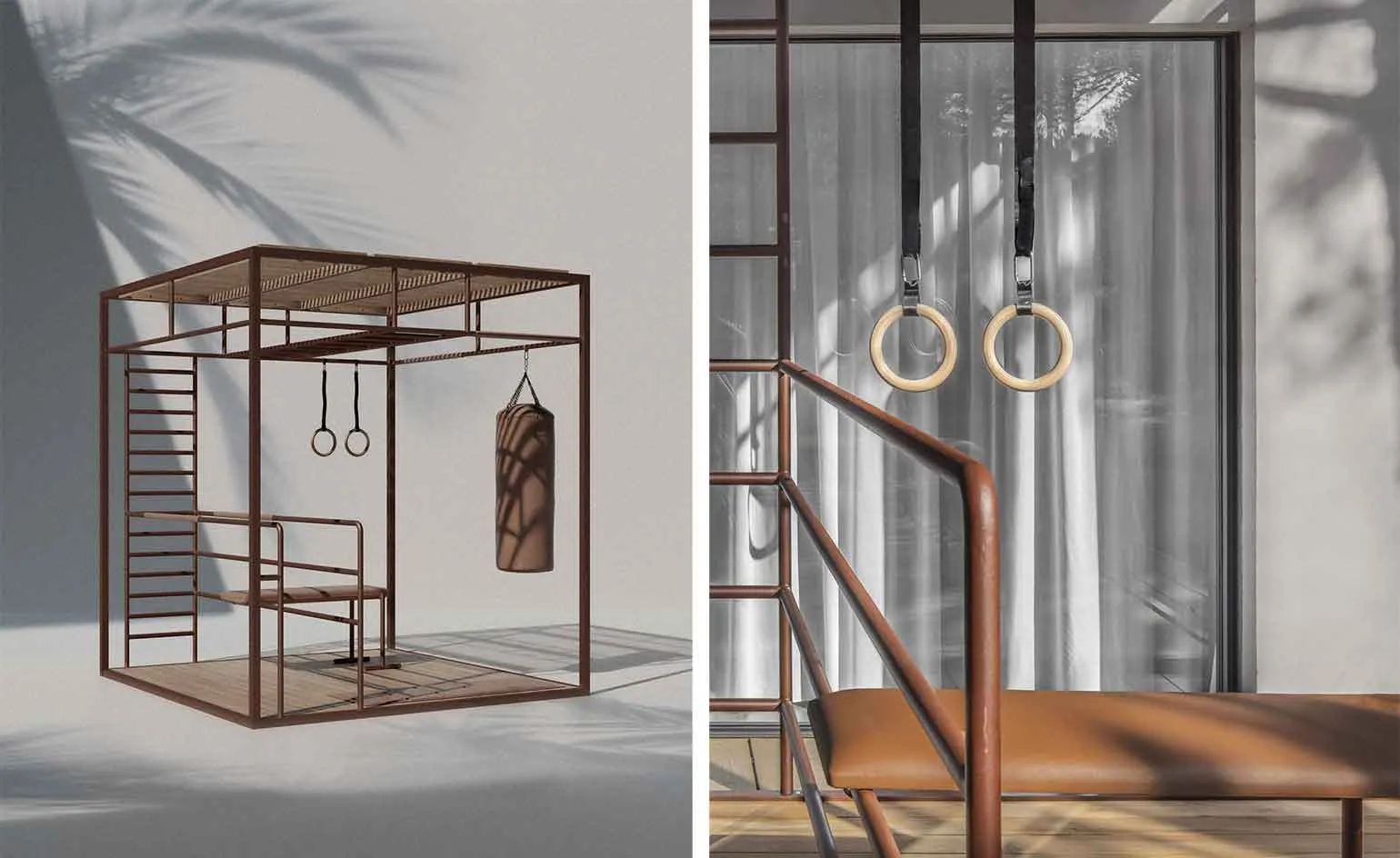
You may also like.
By Jay Cheses
17/04/2024
17/04/2024
Don’t Ride This Wave ….*unless your name is Robinson, Slater or Moore.
The 2024 Olympic surfing comp will be held at Tahiti’s treacherous Teahupo’o. Going for gold could be deadly.
It’s day two of the 2023 Tahiti Pro Surf Competition. I’m perched on the roof of a VIP boat around 100 metres from Teahupo’o, one of the world’s most dangerous waves. American Surf icon Kelly Slater has just been swallowed by a heaving wall of turquoise water. I’m so close to the action that when he’s finally spit out from the ride, my face gets misted in ocean spray. Below me, Australian Jack Robinson, who will go on to win the event, sits on the edge of the boat performing breathing exercises ahead of his heat. Around me, a flotilla of kayaks, jetskis, surfboards, and small vessels bobs in the channel, acting as a floating stadium for fans.
For many of the competitors—and the 1,400-odd residents of the wave’s namesake village—this year’s contest is a dress rehearsal for an event with a far larger global profile in a few months’ time. While many of the world’s top athletes will travel to France in July for the 2024 Paris Olympic Games, the most talented surfers will head here, to the southwest corner of Tahiti island’s small peninsula, Tahiti Iti, to vie for gold at Teahupo’o in just the second surf competition in Olympic history.
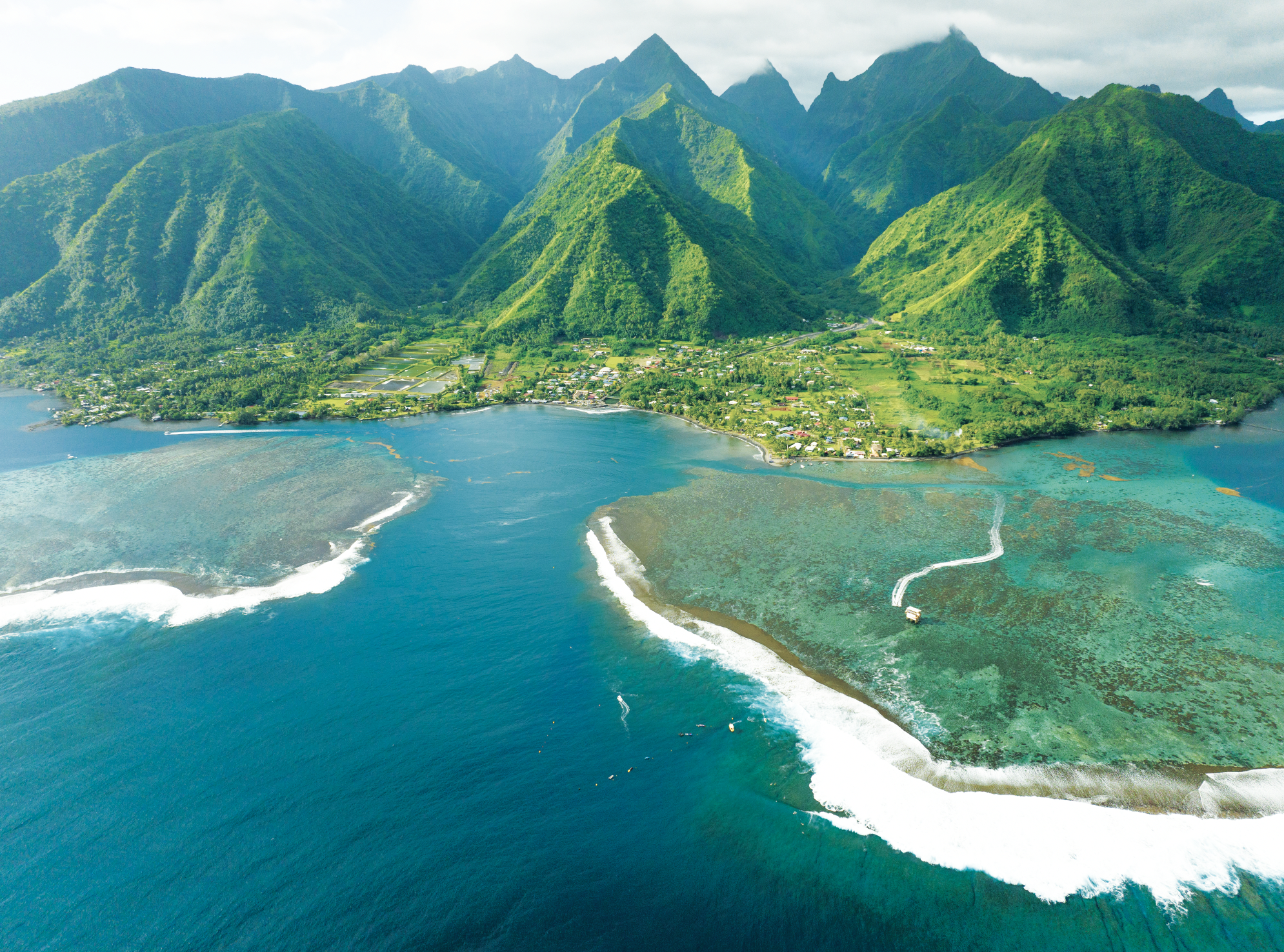
In keeping with the limit of two surfers per gender, per nation, the Australian flag will be flown by Ethan Ewing (No. 2 in the World Surf League rankings at the time of writing) and the aforementioned Robinson (No. 5) in the men’s category, and Tyler Wright (No. 3) and Molly Picklum (No. 5) in the women’s. On this form, hopes of a homegrown medal haul are high.
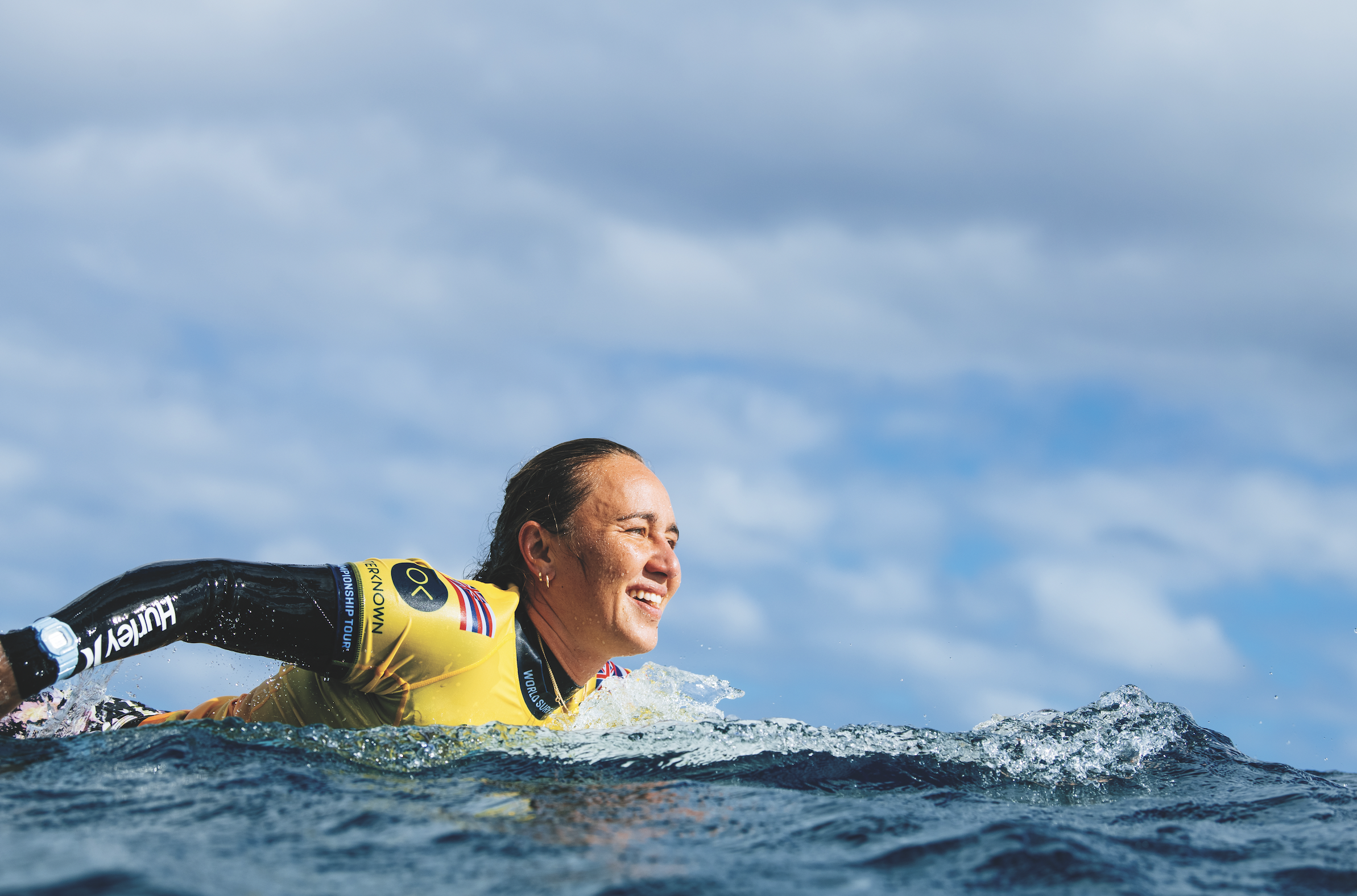
Olympic officials could have chosen a site off the coast of France, such as the surf towns of Biarritz or Hossegor, but historically, Mother Nature brings more sizable waves to Tahiti at this time of year. Plus, surfing has deep cultural ties to the region. The sport originated in Polynesia and dates as far back as the 12th century; it was practiced by Polynesian royalty. Teahupo’o is also a world-class wave that challenges the mental and physical prowess of even the most experienced competitors. The high risk of surfing this spot guarantees thrills that officials anticipate will boost viewership.
Located in the gin-clear waters of the South Pacific with a background of mountains that appear to be draped in jade-green crushed velvet, Teahupo’o (pronounced TAY-a-hoo-poh-oh) is one of the sport’s most infamous swells. (Its name loosely—and cheerily—translates to “place of skulls”.) According to Memoirs of Marau Taaroa, Last Queen of Tahiti, printed in 1893, the first person to surf it was actually a woman from the island of Raiatea, in the 19th century. Not until the 1980s did anyone dare attempt it again, with the first competition hosted in the late 1990s. Former pro turned filmmaker Chris Malloy has called it “the wave that has changed surfing forever”.
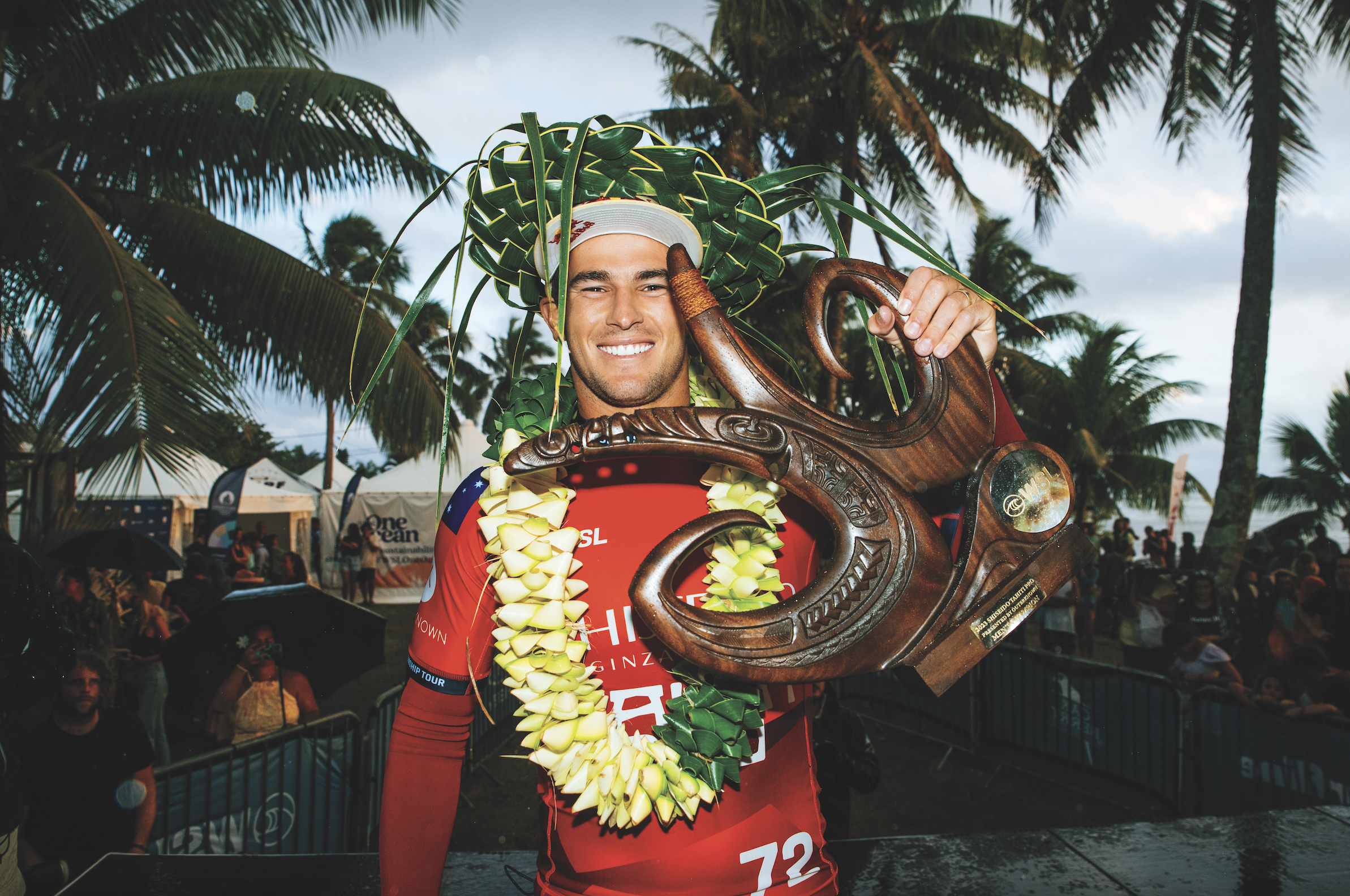
In the right conditions, Teahupo’o can tower upwards of six metres. That may sound small compared to the monster-size Jaws in Maui or Nazaré in Portugal—which can climb as high as 25 metres—but it’s not the height that makes Chopes, as the wave is lovingly called, so special. It’s the weight. When surfers describe a wave as heavy, they’re referring to its combination of a thick lip (the powerful section that starts to curl over) and the amount of water surging behind it.
Like most of the surf breaks found throughout French Polynesia, Teahupo’o is a reef break, meaning the water spills over the surface of knife- sharp coral. Chopes is unique because around 50 metres beyond the reef, the ocean drops more than 15 metres. As swells come toward the shore, the transition from deep water causes them to jack up over the coral before quickly crashing down with tremendous force.
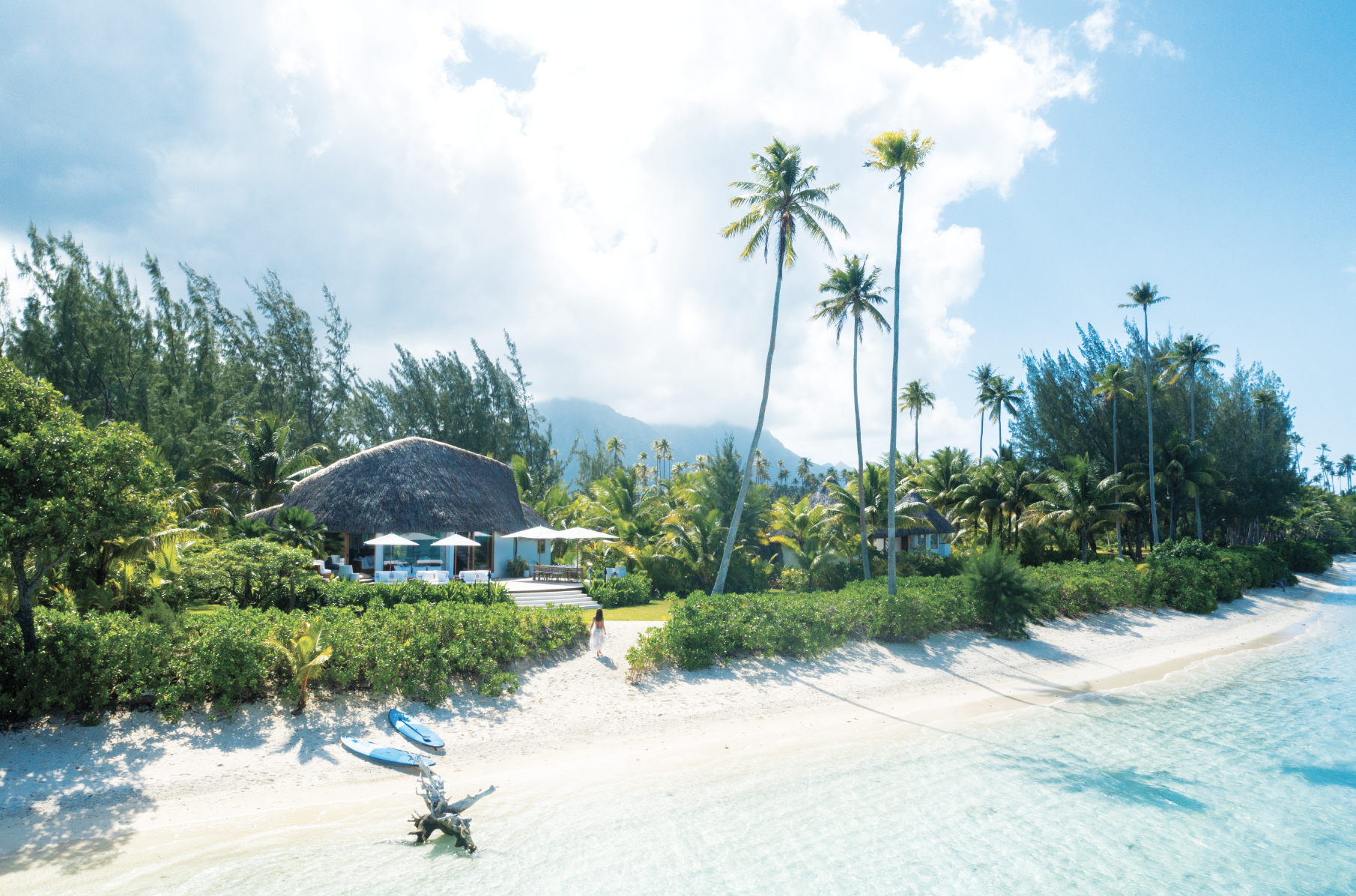
“The reef evolved perfectly in order to absorb the wave’s energy in the shortest distance possible to create this natural wonder,” surf superstar Laird Hamilton tells Robb Report. “It’s a wave that stands straight up and creates a huge barrel. It’s one of the greatest waves on Earth.” In 2000, Hamilton rewrote surfing history when he rode what has been dubbed the Millennium Wave here. Up until then, Teahupo’o was considered too perilous to attempt when it reached a certain size. Hamilton, a pioneer of tow surfing, had a jetski pull him into what is still considered one of the heaviest waves ever ridden. Surfer magazine published a memorable cover of him getting barrelled with just the words “Oh my god…” because the feat was so dangerous.
In places, the reef lurks just 50 centimetres beneath the water’s surface, and the lip can act like a liquid guillotine if it clamps down before a surfer exits the hollow tube of the wave, known as the barrel. Had Hamilton wiped out, he wouldn’t have had an escape route.
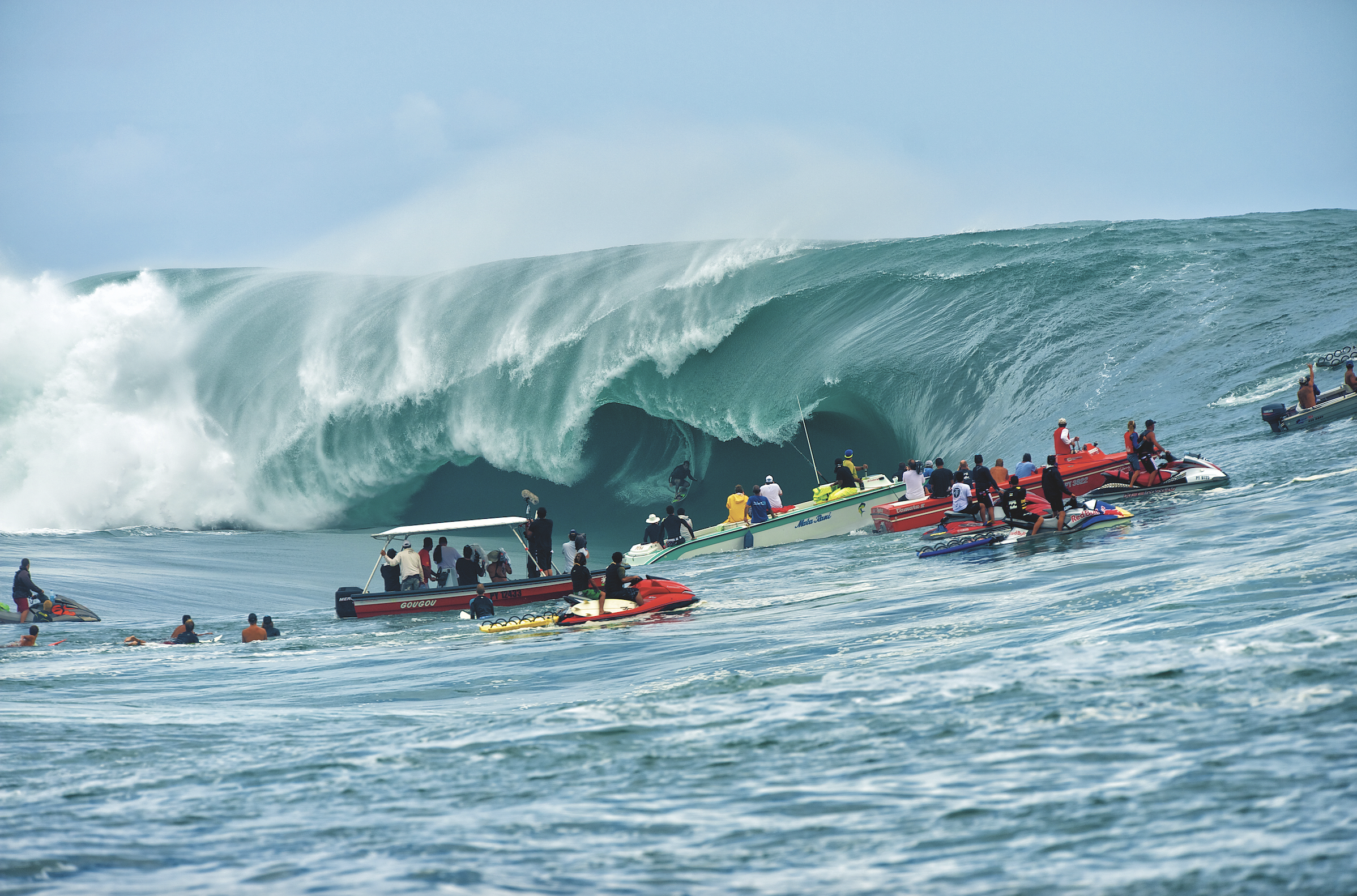
I’m an avid amateur surfer and live on Maui part-time to take advantage of Hawaii’s waves, but even on a gentle day, I wouldn’t attempt Teahupo’o. Teahupo’o village has a water-safety patrol that watches over athletes during contests. Still, a handful of surfers have lost their lives here, and many go home with serious battle wounds. In August last year, during a practice session for the Tahiti Pro, Ethan Ewing fractured two vertebrae in his back after crashing out in solid, but average, six-foot waves—an accident that arguably cost him top spot in the world rankings.
In classic gung-ho-surfer fashion, though, the Queenslander was back in the water at Teahupo’o three months later, one eye still resolutely fixed on Olympic glory. “Definitely more anxious than excited heading back to Tahiti after hitting the reef really hard last time,” he posted on his Instagram account. “Teahupo’o is still seriously intimidating, but I feel like I’ve made some steps in the right direction.”
Unless you surf, Tahiti Iti probably isn’t on your radar. Starting from the largest town of Taravao, the south-coast road ends at the village of Teahupo’o, hence its nickname, the End of the Road. The community, just 500 metres from the wave, is the antithesis of the glitz and glamour of Paris or even nearby Bora Bora. This is a slice of tropical paradise that has somehow evaded development. To reach the contest each day, I park at the end of the road, then walk over a one-lane bridge and follow a sandy path that passes local homes.
“All of your senses are heightened here,” former world surf champion C. J. Hobgood tells me when I run into him at the event. “It’s not just the wave—it’s the island. Everything looks five- dimensional. Mountains seem stacked on mountains and glow a vivid green. You turn to the right and these bluer-than-blue waves are breaking. Then a rainbow might appear in the sky. The raw beauty is overwhelming to take in when you first arrive.”
Surfers talk of feeling the mana, a Polynesian word for spiritual energy, here. Jack Robinson even referenced it after his victory in the Tahiti Pro. It may sound woo-woo, but I undoubtedly feel something when I arrive after a 90-minute drive south-west from the hotel-lined harbour of Tahiti Nui, the island’s larger, more developed area. Tahiti Iti’s empty beaches and waterfall-riddled lush interiors remind me of a quieter, more vibrant version of Hana, a little corner of Maui with just one hotel, a handful of restaurants and kilometres of untamed nature. In an era of over-tourism, this kind of purity comes with a trade-off: You won’t find five-star hotels or celebrity-chef restaurants on Tahiti Iti. In fact, it doesn’t have any hotels at all—and won’t be opening any ahead of the Games.
Locals have been adamant that Olympic infrastructure remains minimal. The proposed construction of a three-storey judging tower directly on the reef at Teahupo’o has been a major concern among residents and environmental groups. The one Olympic improvement locals welcome is a new bridge that will connect to the beach in front of Chopes.
I check into Villa Mitirapa, newly built in the rural community of Afaahiti, a 25-minute drive from Teahupo’o. Giant carved wooden doors lead to an open-air living room, a plunge pool and views of the lagoon, and every evening a chef drops by with a delicious preparation of the catch of the day. In the village of Teahupo’o, you’ll find family-owned guesthouses such as Vanira Lodge, a collection of three bungalows tucked up in Te Pari (“the cliffs” in Tahitian), as well as A Hi’o To Mou’a, a B&B run by the proprietor of hiking outfit Heeuri Explorer.

Pro surfers are typically hosted by the same local families year after year. (During the Olympics, athletes will be housed on a ship anchored in a sandy area offshore to avoid damaging the seabed.) Hobgood tells me he made visits to his “adopted Tahitian family” for nearly two decades. For the past five years, he has come to Teahupo’o to help coach reigning Olympic champ, Hawaiian Carissa Moore and now stays with her adopted family. “They take us on hikes you’d otherwise never know how to access and have rich stories about the place,” he says. “And everything they prepare for us at meals, from the passion-fruit jam to the chilli sauce, is homemade.”
The next big thing being “adopted” by a Tahitian family is hiring Raimana van Bastolaer as your guide. For a first-time visitor, Tahiti Iti can be far harder to access than other islands, which is perhaps why so few people explore the peninsula. You need a local to reveal where to go, and van Bastolaer makes you feel like an insider.
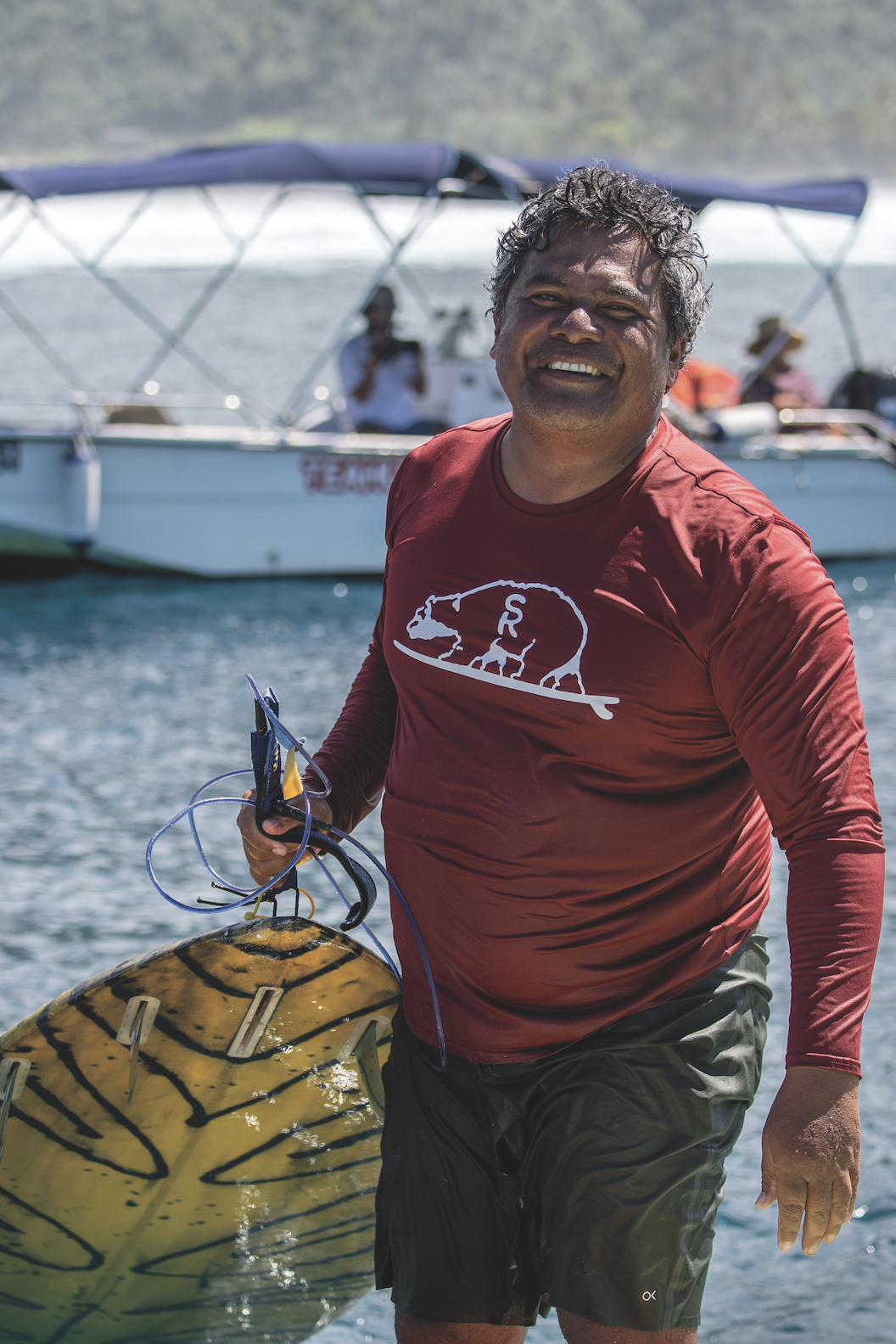
Born and raised in the capital of Papeete, he was one of the first locals to surf Chopes, and over the years, his intricate knowledge of the wave has earned him the nickname the Godfather of Teahupo’o. He was out in the channel with Hamilton the day the American had his historic ride, and John John Florence and Kelly Slater are among the surfers who stay with him when they’re in town. Van Bastolaer even did a stint as a part-time coach at Surf Ranch, Slater’s central California wave park. Thanks to his non-stop pursuit of a good time, everyone wants to be around him. Now 48, the stockily built, dauntingly athletic van Bastolaer has become the go-to guide for visitors ranging from Julia Roberts, Margot Robbie and Jason Momoa to Mark Zuckerberg and Prince Harry. “I get to yell at princes and CEOs,” he jokes. “I’m out in the water with them telling them when to pop up and paddle. And they love it.”
Tahiti’s unofficial ambassador lives and breathes surfing. Through his company, Raimana World, he takes just one or two guests at a time on private curated surf tours throughout French Polynesia’s two central archipelagoes: the Society Islands (which are home to Tahiti) and the Tuamotus; he plans to add Fiji soon. Some of his clients base themselves on their own yachts or charter one through Pelorus. The yacht specialist’s Tahiti portfolio includes the 77-metre La Datcha, which has two helipads, a submersible and a spa.
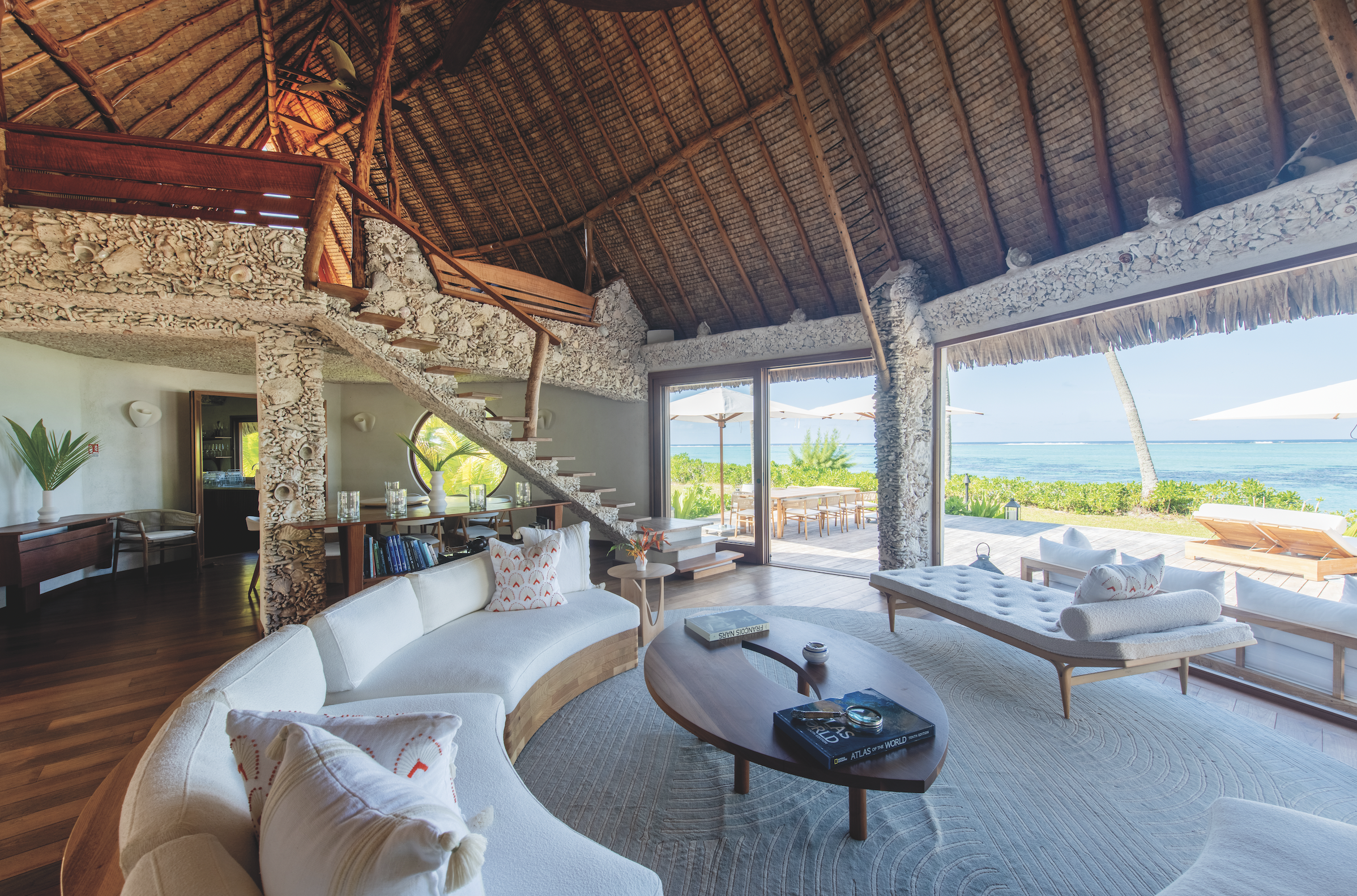
Other clients he directs to exclusive properties, such as Motu Nao Nao, a new 25-hectare private-island resort in the cerulean lagoon of Raiatea with just three enormous villas crafted from coral, wood, and shells. A roving bar bike delivers custom cocktails to guests as they explore the island, and the French chef, inspired by Asian and North African cuisine, prides himself on never repeating a dish, no matter how long guests stay.
Van Bastolaer gets only one or two clients a year experienced enough to be coached into a barrel at Teahupo’o. “Most just want to get close to the wave to feel its energy and hear it roar,” he says. “That’s enough to give you an adrenaline rush.” Locals are incredibly protective of their surf spots, and van Bastolaer stays away from popular breaks. “Out of respect, I don’t take clients out if there are more than a few people in the water. Luckily, I have access to toys that get us away from the crowds.” He island-hops by helicopter, yacht or jet boat, then transports guests to surf breaks via high-speed RIB (rigid inflatable boat) or jetski. Most days average two to three hours of surfing, and he sprinkles in other activities such as snorkeling, whale watching (July to November) and barbecues at his house.
Papara, the beautiful black-sand beach where van Bastolaer honed his skills, 45 minutes from Teahupo’o, will be turned into a fan viewing zone with jumbo screens during the Olympics. Papara is one of the most forgiving surf breaks in Tahiti, and I head here to longboard. La Plage de Maui, a simple restaurant with sandy floors, plastic chairs and lagoon vistas, becomes my daily après-surf spot. Located in West Taiarapu, 40 minutes east of Papara, with nothing but coastal road and local homes in between, this humble spot sits next to Maui Beach, one of the only white-sand beaches on the whole island. This stretch may be Tahiti Iti’s best-kept secret.
After a barefoot walk along the shore, I don’t bother to put my shoes back on before heading into the restaurant, where servers proudly sport Tahiti Pro T-shirts and posters of pros hang on the walls. At a waterfront table, I spot rainbow-hued parrotfish and Moorish idol in the glassy lagoon. I’m pretty sure I could live on a diet of local Hinano beer and poisson cru, Tahiti’s national dish of raw fish marinated in lime juice and coconut milk. My final day, I ask my waitress if she’s concerned the Olympics might overexpose this laid-back, oft-forgotten enclave. She just laughs in reply.
On the drive back to my villa, I remember what van Bastolaer told me when we were introduced a year ago: Tahiti Iti’s specialness is lost on those seeking overwater bungalows or nightlife. It’s a place you can’t know in a day. The island reveals itself to you slowly. And even when van Bastolaer is your host, he won’t give away all its secrets.
You may also like.
The Boldest, Most Exciting New Timepieces From Watches & Wonders 2024
Here are the highlights from the world’s biggest watch releases of the year.
Watches & Wonders, the world’s largest watch show, is in full swing in Geneva. The highly anticipated cascade of new releases is marked by confident individual brand identities — perhaps a sign that watchmakers are done scrambling through the violent collision of restricted supply and soaring demand for high end watches. All seem to be back on solid footing.
Steady confidence is a good thing. Consider Jaeger-LeCoultre offering up traditionally styled grand complications or Vacheron Constantin revamping the classic Patrimony with smaller cases and vintage-inspired radially brushed dials. Consider TAG Heuer celebrating the 55th anniversary of the square Monaco with a skeletonized flyback confidently priced at US$183,000, or Moser similarly showing off a fascinating skeletonized tourbillon in its distinctive 40 mm Streamliner at US$86,900. IWC has leaned hard into their traditionally styled Portugieser line, including an astounding Eternal Calendar complication. We find the storied French houses of Cartier, Chanel and Hermes blurring the lines between jewelry and watchmaking with the technical prowess and artistic whimsy that originally earned these brands their exalted place in the hearts and minds of sophisticated aesthetes. Confidence abounds in 2024.
We could go on and on with examples, but the watches below will demonstrate that for 2024 the big watch brands dared to be themselves, which appears to have given them the confidence to take some seriously compelling horological risks. We have separate coverage of off-show releases and, of course, Patek and Rolex, so keep and eye out for those.
—
A. Lange Söhne Datograph Perpetual Tourbillon Honeygold Lumen
Chanel Bobbin Cuff
You may also like.
By Jay Cheses
17/04/2024
A Gucci Garden Blooms in Sydney
On a rainy Sydney night, the drinks talent from Maybe Sammy mixed with guest bartenders from Giardino 25 in Florence, for a night of liquid magic.
Since hanging out its shingle in 2022, Giardino 25, the all-day café and bar located in Gucci’s palatial, multidisciplinary space in Florence, has been a boon to stylish tipplers. Taking inspiration from one of its previous tenants (a longstanding florist), the garden-themed joint (Giardino is the Italian word for garden) serves delicious aperitivi and dangerously addictive cocktails.
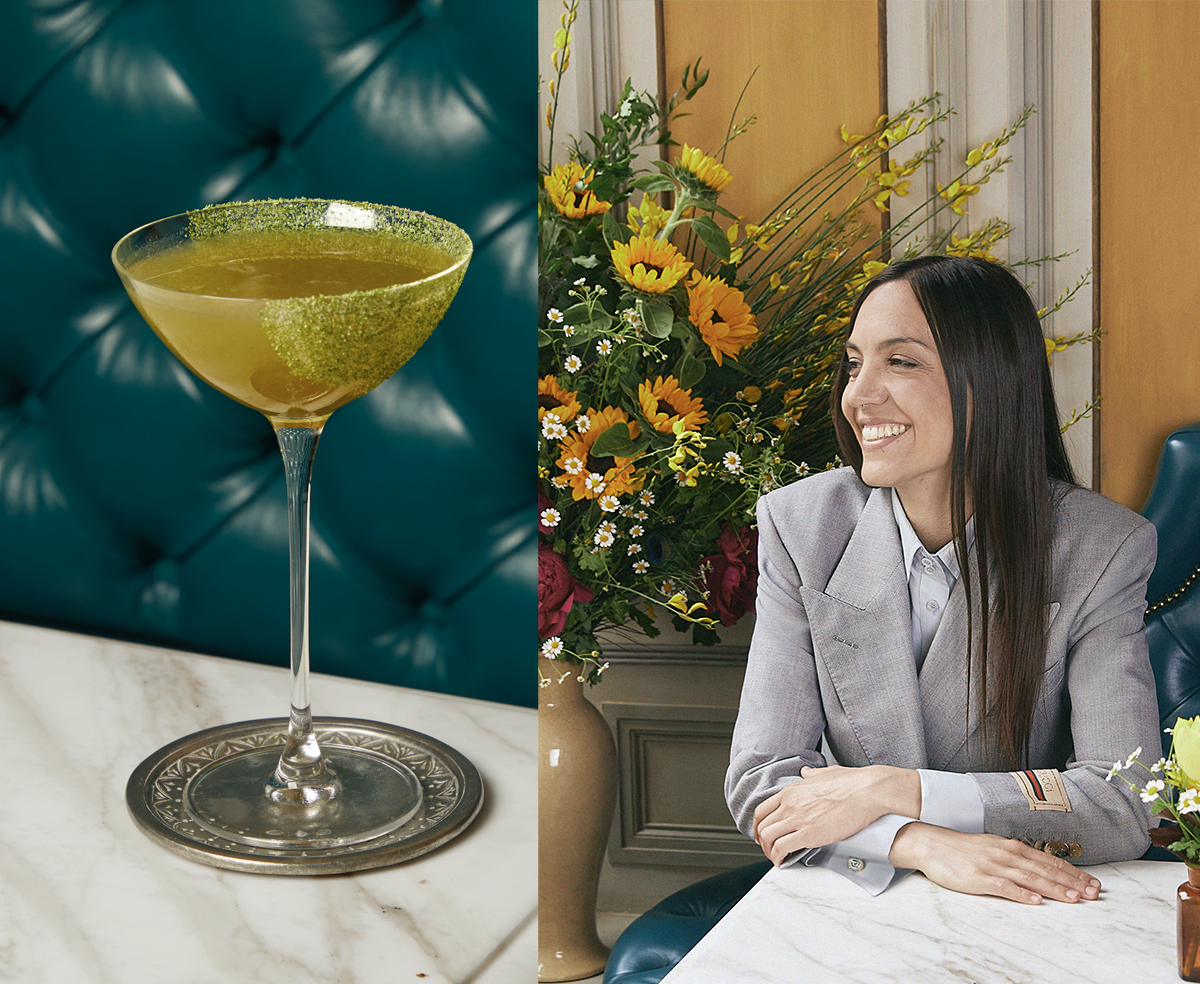
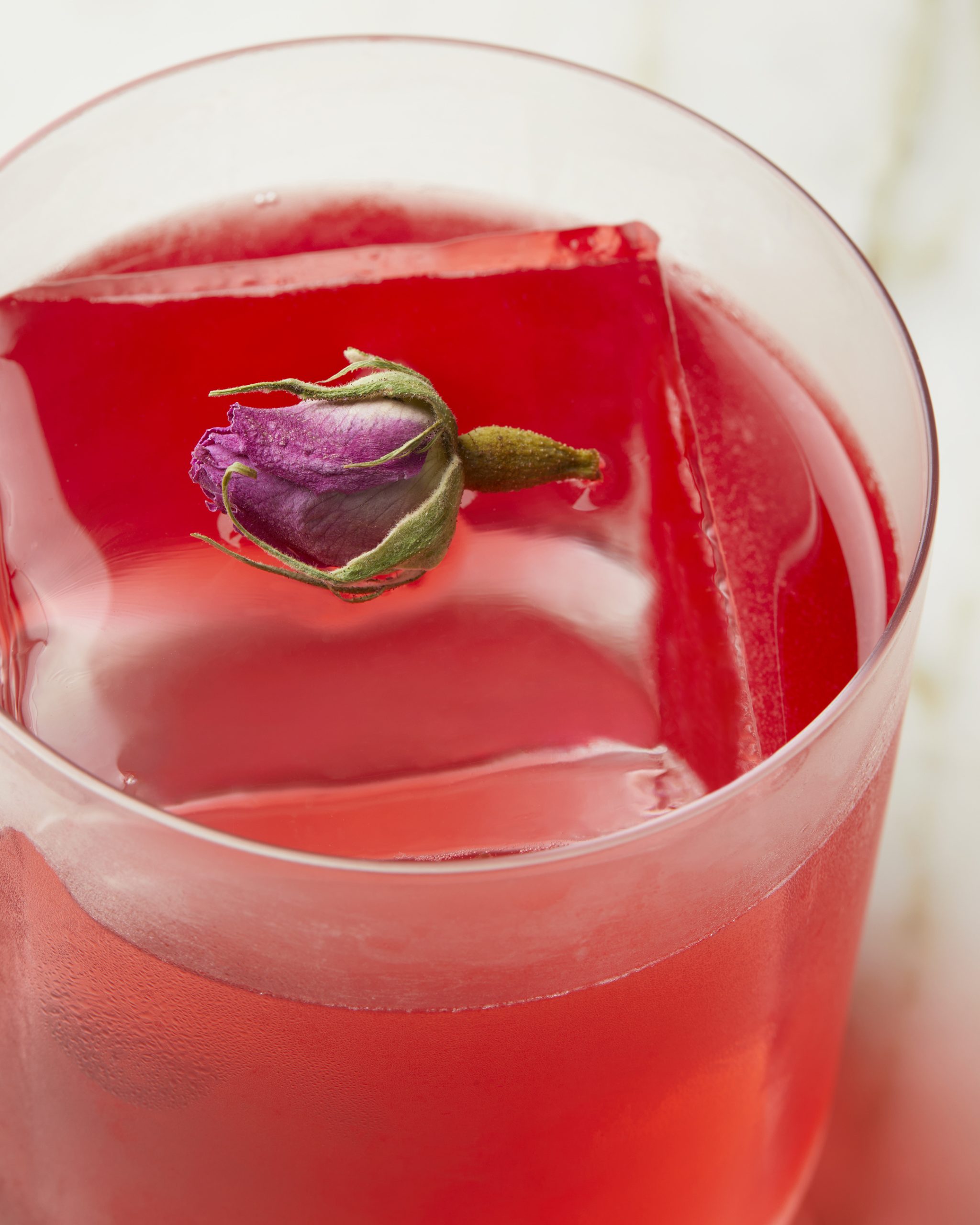
Giardino 25 took bloom this past Tuesday at a pop-up at El Primo Sanchez in Paddington. The Maybe Cocktail Festival in Sydney is a series of 20 events scattered throughout the city curated by the award-winning Sammy’s Cocktails team. The festival aims to spur knowledge-sharing and foster excellence in Australia’s drinks scene.
“Last year we held 16 events and they were all packed,” says Stefano Catino, director of hospitality at Public, the management company behind Maybe Sammy venues and bottled drinks, “so this year we’ve curated extra events and flown out even more international bars and bartenders.”
“Nineteen of the 21 events are free to attend, which is very important to us,” he continues. “The cost of living is high, and it’s very expensive for Australians to travel overseas, so this festival allows people to drink cocktails from an amazing bar in Rome or try a Tommy’s Margarita from the gentleman who created it without the cost of a plane ticket.”
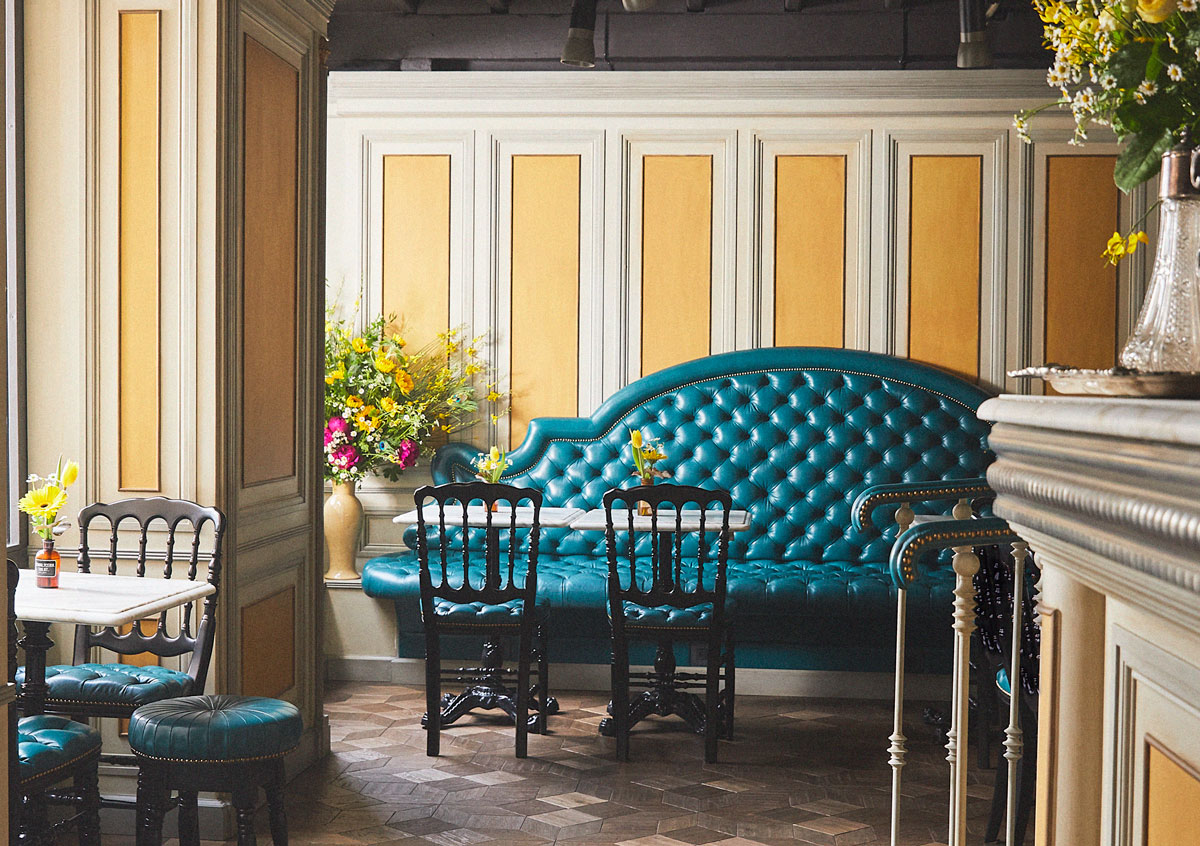
Dressed head to toe in Gucci, and using the bar as her personal catwalk, Giardino 25’s special guest, Martina Bonci, looked every bit the star behind the bar. “We have brought our mix of classic Italian influences and innovation,” she told Robb Report, “so guests in Australia get a little slice of what we do in Florence.”
Among her tantalising pours were powerful dirty martinis decorated with shimmering gold leaf and Aurora, a transparent twist on the Negroni.
Reflecting on her whirlwind trip down under, Bonci said their visit to Bondi Beach and the cocktails at Maybe Sammy were the highlights.
“The bartenders at Maybe Sammy are world-class,” she explained. “There is a good reason they win awards and have a respected reputation overseas. And El Primo Sanchez has such a fun atmosphere—we had a great night.”
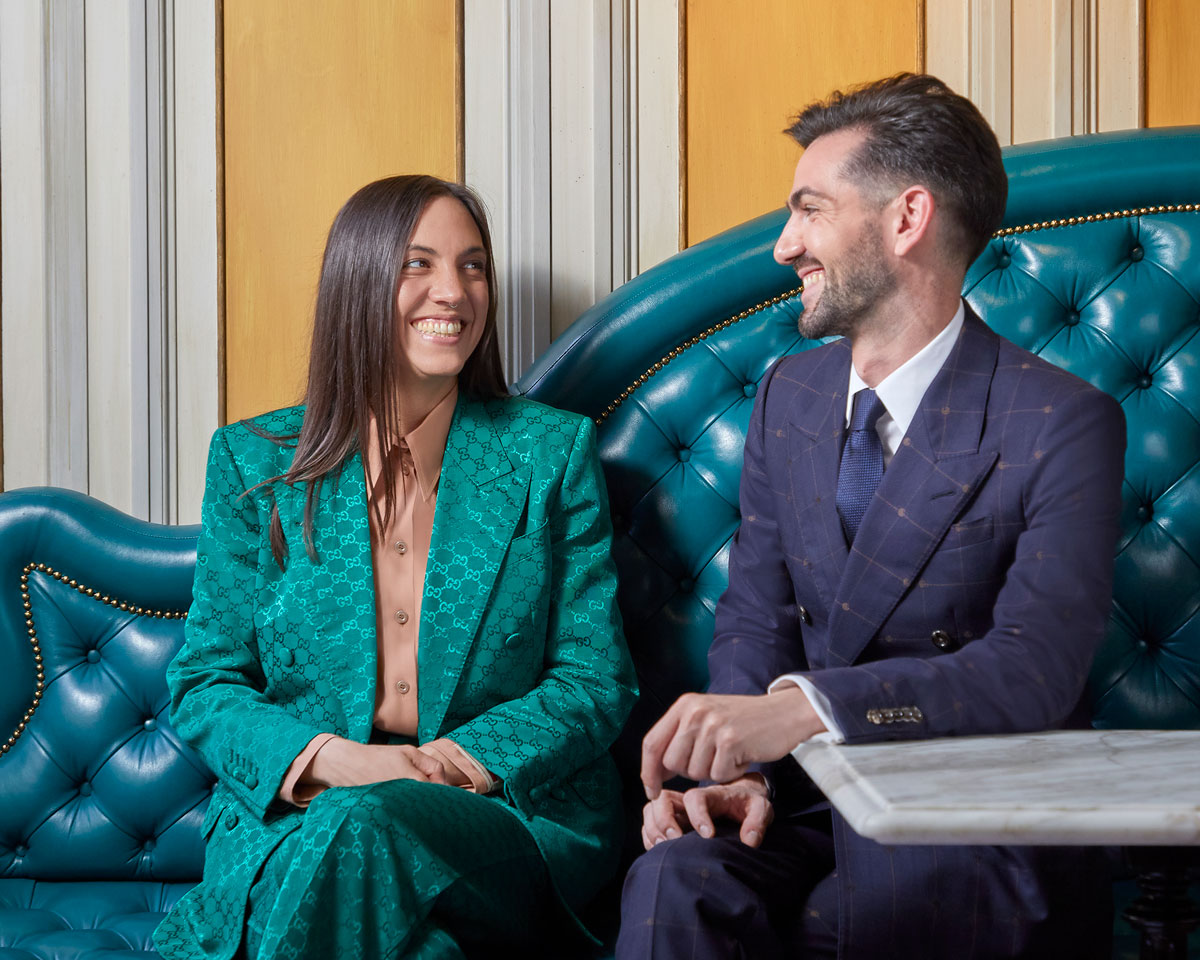
Bonci, who came to prominence in a long string at Milanese hipster joint Gesto and is known for her use of agave, favors drinks dripping with seasonal fruits and citrus flavors. Having tried her creations, we do, too.
She made a serious impression on Sydneysiders, who would do well to make a pilgrimage to see her in action on home turf. As if any of us need another reason to visit Italy.
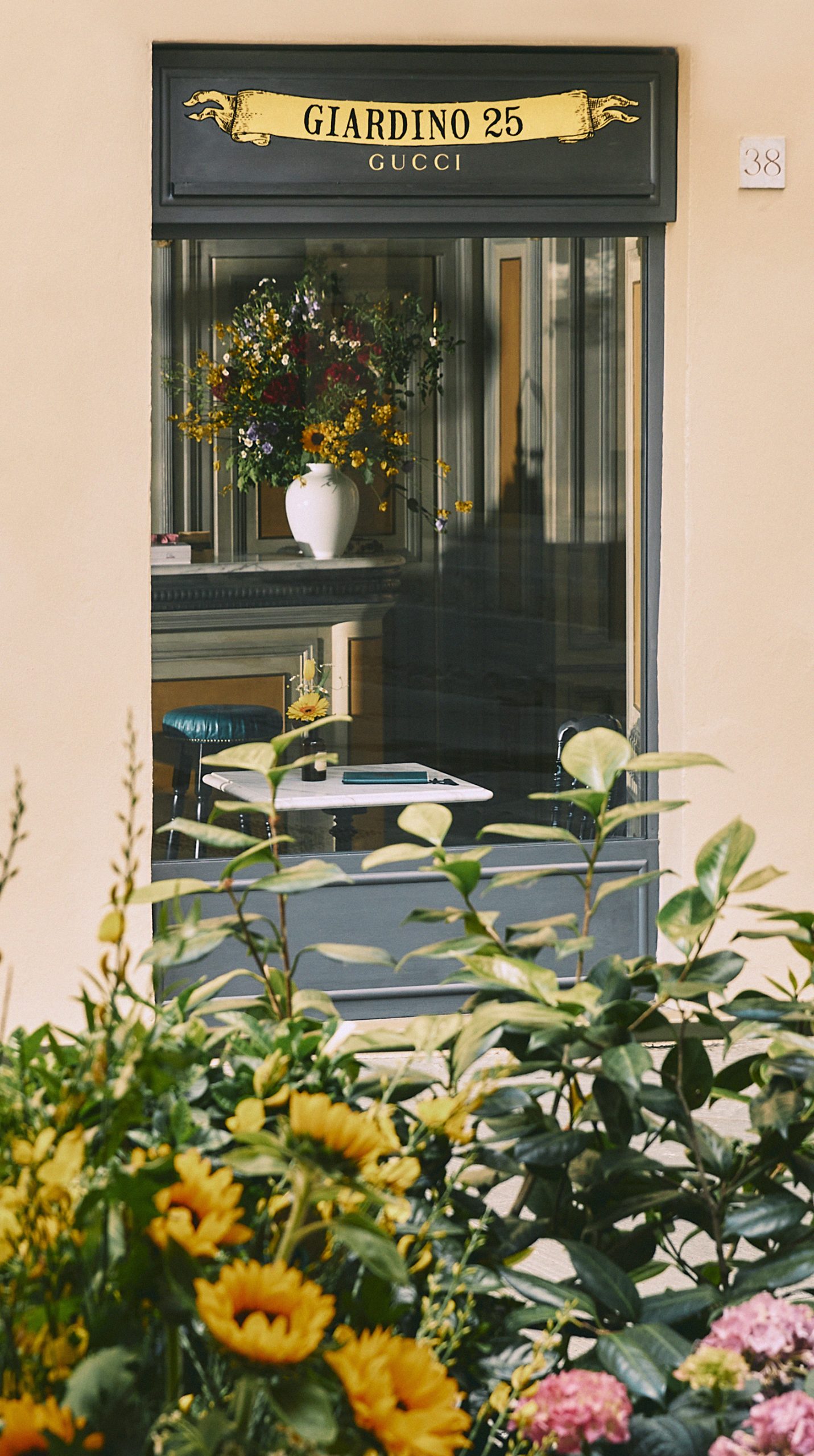
The Maybe Cocktail Festival, continues this weekend in Sydney, with the public welcome to attend a Bartenders Brunch at Sydney’s Alpha on Sunday from 11.00 am – 3.00 pm, hosted by George Calombaris.
View the program: Maybe Cocktail Festival @maybe_cocktail_fetsival
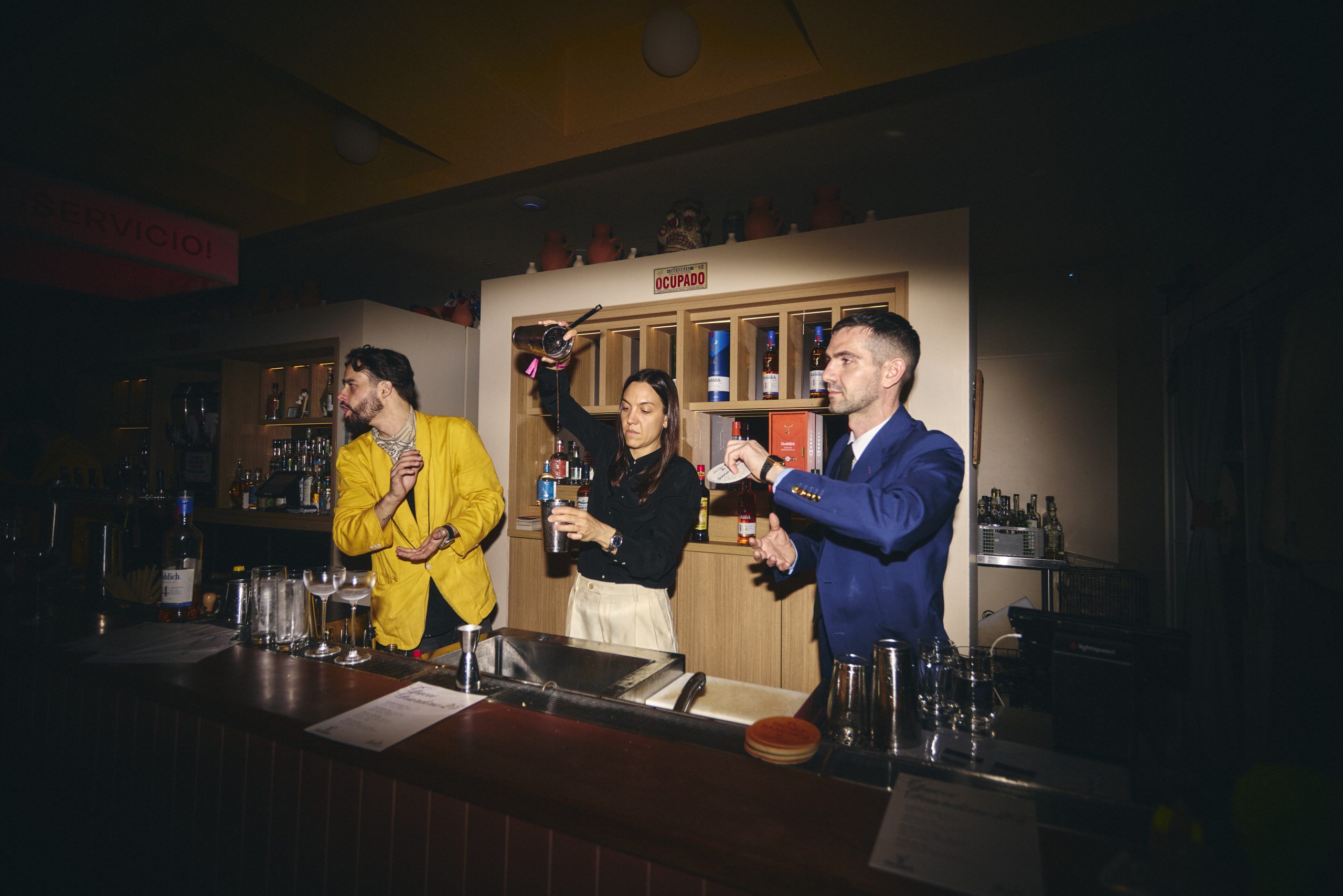
All images courtesy of Gucci.
You may also like.
17/04/2024






